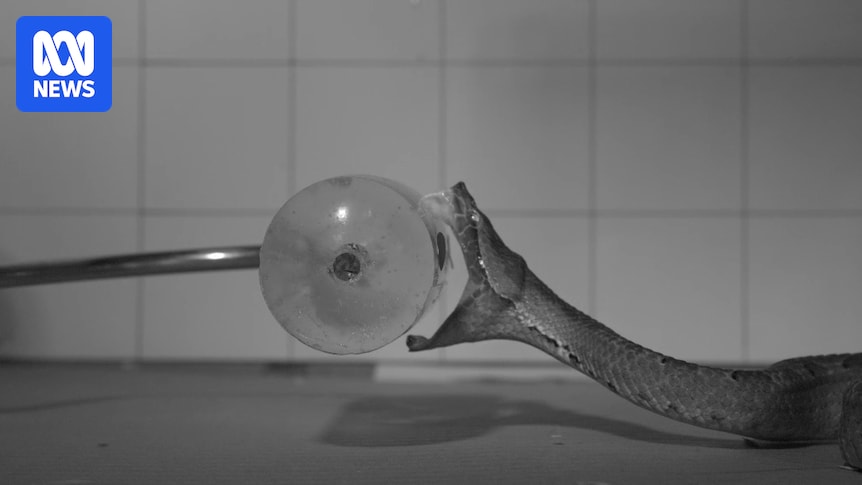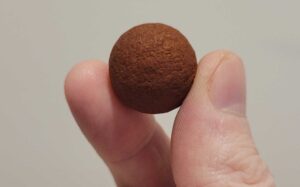
In a groundbreaking study, Australian researchers have used high-speed cameras to capture the rapid strikes of venomous snakes, revealing the varied techniques these reptiles use to deliver their deadly venom. The study, published in the Journal of Experimental Biology, is the largest of its kind, comparing the striking methods of different snake species under controlled conditions.
Lead author Silke Cleuren, an evolutionary biologist at Monash University, traveled to Venomworld in Paris to conduct the research. This facility, known for breeding snakes from around the globe for venom extraction, provided the perfect setting for Cleuren and her colleagues to record the bites of 36 snake species from the viper, elapid, and colubrid families.
Vipers: The Speed Demons of the Snake World
Vipers are renowned for their lightning-fast strikes, and the study confirmed this reputation. On average, vipers reached their prey in just 100 milliseconds, a speed three times faster than the blink of a human eye. The blunt-nosed or Levantine viper (Macrovipera lebetina) was the fastest, reaching its target in just over 20 milliseconds.
According to Alistair Evans, a co-author of the study and evolutionary morphologist at Monash University, the vipers’ speed far surpasses the “mammalian startle response,” which is the time it takes for a mammal to perceive a threat and react. “Less than 100 milliseconds is much, much faster than the mammalian startle response, particularly for large mammals like us,” Evans explained.
“If something is moving towards you, you have to see it with enough time to register that it’s moving, and then react to it,” said Professor Evans.
Vipers possess hinged fangs that allow them to have longer teeth, which fold into their mouths when not in use. During the study, if their initial bite wasn’t effective, the vipers would “walk” their fangs into a better position to inject venom. This adaptability, combined with their speed, makes vipers formidable predators.
Elapids: Swift and Stealthy
Most of Australia’s venomous snakes belong to the elapid family, characterized by fangs positioned at the front of their mouths. The Australian rough-scaled death adder (Acanthophis rugosus) was among the four elapids studied. Known for their speed, death adders can reach their prey in about 30 milliseconds, moving at speeds up to 2.21 meters per second.
Dr. Timothy Jackson, a snake venom researcher at the University of Melbourne, noted that the study confirmed what scientists already suspected about death adders. “Death adders strike extraordinarily quickly and are very much in the viper range … these are incredibly fast strikers,” he said.
“In fact, in terms of reaching maximum velocity, death adders were the second fastest species in the entire study,” Dr. Jackson added.
Unlike vipers, elapids have shorter fangs, requiring them to get closer to their prey before striking repeatedly to inject venom. This methodical approach, combined with their speed, makes elapids highly effective hunters.
Colubrids: A Unique Approach
The study also included the mangrove or gold-ringed cat snake (Boiga dendrophila) from Southeast Asia, the sole representative of the Colubridae family. Unlike vipers and elapids, colubrids have fangs located towards the back of their mouths, resulting in a different biting style.
The gold-ringed cat snake reaches its maximum gape sooner and maintains it longer than other species. Upon contact, it closes its mouth and uses its moveable upper jawbone to create crescent-shaped cuts, potentially enhancing venom transfer.
“One of the interesting findings of the paper was how different families of snakes use their venom in different ways,” Professor Evans noted.
Despite the limited representation of colubrids in the study, the findings provide a foundation for further research into this diverse family of snakes.
Implications and Future Research
This study not only deepens our understanding of how venomous snakes strike but also sets a precedent for future research. Dr. Jackson emphasized the importance of expanding this research to include more snake species, particularly those native to Australia. However, he acknowledged the challenges involved, such as securing funding and collaborating with venom facilities.
“There’s a real proof of principle here,” Dr. Jackson said. “I hope it can be more broadly applied and also potentially modified for other studies.”
The insights gained from this study could have significant implications for both medical research and the development of antivenoms. As researchers continue to explore the fascinating world of venomous snakes, the use of high-speed cameras will undoubtedly play a crucial role in unveiling the secrets of these enigmatic creatures.






